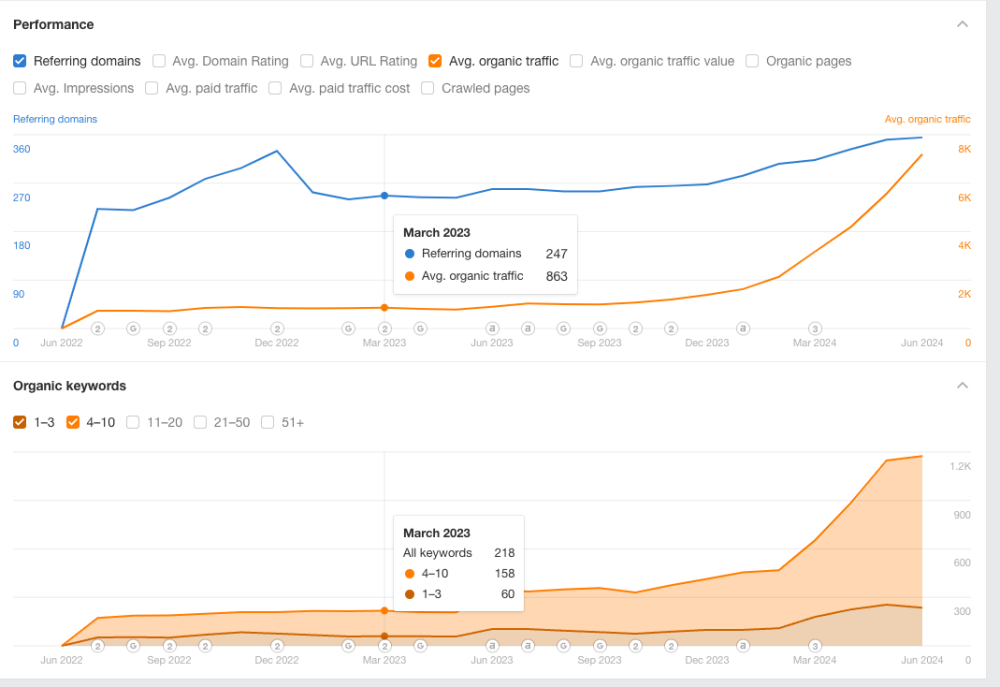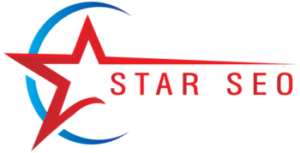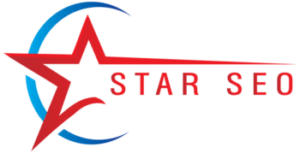
Planning a large event is no joke.
It takes a ton of phone calls, emails, vendor comparisons, logistics, and sheer will to make an outstanding event a reality.
Then there’s the not-so-tiny task of having to promote the darn thing, which can be another world of pain – unless you have an agency like ours tackling your SEO.
SEO for events is a subgenre of traditional SEO, and it’s one of the best ways to get the word out about an upcoming event.
Event SEO will:
- Expand your event’s online reach
- Expose your event to new audiences
- Build your website’s authority so that your event landing pages rank higher
- Help you sell more tickets to your event
How do we know that SEO can do all these amazing things for event planners?
We do because we’ve yielded these very results for countless event planning agencies, such as the story we’ll be diving into today.
In this case study, we’ll tell the story of how we achieved an eightfold increase to a client’s organic traffic, and got them ranking for thousands of relevant keywords in the top 10 – so stay tuned!
The Client: A Website for a Large Annual Event
This particular client hosts a website promoting a major event they host once a year in New York City.
It’s an event where industry professionals get the chance to build brand awareness, form collaborative partnerships, and market their products and services.
The goal of the website is not only to sell more tickets to their exhibition, but also to build credibility with audience members.
After all, the more authority and trust they can build online, the more professionals will want to come to their event.
The only trouble was their website wasn’t generating much organic traffic, despite the prestige and respected reputation of the event.
Event planning is just as competitive as any other industry online, and our client was being outranked and overshadowed by their primary competitors.
SEO is also a complicated practice that takes years to master, so it’s not something small teams can handle on their own after watching a handful of YouTube videos.
There are countless variables involved in getting content ranked on search engines, including:
- The strength and relevance of a domain’s backlinks
- Technical factors like indexing errors and loading speed
- Keyword placement and frequency
- Researching keywords
- The quality of your content
- Content length and formatting
- URL structure and site architecture
And the list goes on and on.
Knowing they needed help from the experts, they got in touch with our team to do what we do best: simplify their SEO success.
The Initial Consultation
During our consultation call with the client, we asked them what their primary needs were SEO-wise.
This was to determine which of our products would be the best match.
For instance, if a client wants to boost brand awareness while building backlinks, we would recommend our Press Release service (which creates and distributes relevant press releases to 300+ media and news outlets).
In this case, the client wanted to:
- Build authority for their homepage (and rank higher)
- Generate more organic traffic to their website
- Become recognized as a thought leader in their field
- Start ranking for keywords related to their event
Since their goals were so diverse, we decided it was best to set them up with a Star SEO’s campaign.
What’s that?
Managed Link Building is our fully managed SEO service.
Rather than selecting one of our SEO products, Star SEO uses a combination of all our products to meet the client’s goals.
Each Star SEO’s client gets set up with a dedicated campaign manager who develops a long-term, cohesive SEO strategy for their website. Clients enjoy monthly strategy calls, advanced analytics, and a fully-maintained backlink profile.
Should one of the backlinks we built for you go down, we’ll replace it immediately, ensuring you don’t lose any ranking power it provides.
Products used in the Campaign
We worked with the client for a total of 28 months.
It was an extended campaign that was yielding such amazing results that the client saw no reason to stop. Even now, our efforts are continuing to generate traffic, leads, and ticket sales for the client’s website.
Since the client had a diverse set of SEO goals, we utilized a wide variety of our products, including:
- Managed Link Building to consistently produce high-quality content that draws in audiences
- Link Outreach for targeting valuable backlink opportunities like guest posts
- Link Insertions to pick up high-value link placements and brand mentions on relevant external websites
- Content Syndication to build additional backlinks and get additional value/traffic generation out of top-performing blog posts
It’s important to note that each month’s order looks slightly different depending on A) the stage of the campaign and B) the client’s needs/budget at the time.
There’s no one-size-fits-all order here, as our campaign managers work with our clients to determine the appropriate products to employ each month.
In this case, the client was eager to produce lots of blog content, so just about every month included 4 orders for 1,500-word articles.
Why such a heavy focus on content creation?
After consulting with the client, we felt that consistently producing thought-leader-worthy blogs each month would draw in lots of potential attendees.
Each blog contained internal links to the client’s homepage and event sign-up forms, and we included CTAs (calls to action) that encouraged users to either attend or leave their contact information for later.
We also syndicated a few of the client’s top-performing posts on related websites and media outlets. The syndicated posts contained backlinks and helped the client’s content reach new audiences (and potential event attendees).
The SEO Audit: Establishing a Strong Foundation
Every Star SEO’s campaign starts off with a tried-and-true SEO best practice, an audit.
An SEO audit is where we do an in-depth analysis on the client’s website to determine its current SEO performance.
We use several tools to aid us in this process, such as accessing the client’s Google Search Console and Google Analytics accounts.
Doing so lets us identify and resolve any crucial indexing errors, assess current keyword rankings and organic traffic generation, and gain insights into the website’s demographics (i.e., where the majority of users come from, both geographically and online).
Ahrefs is also a big help in this regard, as we can quickly identify broken links and take an in-depth look at the site’s backlink profile.
Why are SEO audits necessary?
They’re an unskippable first step for any SEO campaign because they help you establish a strong foundation. Not only that, but audits will help you identify any crucial errors that may hinder your future optimizations.
For example, if an indexing error is causing a website to not appear in Google’s index, then creating a bunch of stellar content for it will be a total waste.
It’s imperative that we fix issues such as these during the audit phase to ensure smooth sailing for the campaign down the line.
During an audit, we look at things like:
- On-page SEO factors like keywords in metadata, title tag, first 100 words of content, etc.
- Technical SEO factors like page loading speed, broken links, and duplicate content
- Their site architecture and URL structure
- The health of their backlink profile (and if any major gaps exist between them and competitors)
- Any keywords they’re currently ranking for
Needless to say, SEO audits are labor-intensive and can take quite some time to complete. Despite this, they’re a super important step that we NEVER skimp on.
Looking for Easy-Win Keyword Opportunities
SEO is by no means an overnight process.
By that, we mean you won’t be dominating the search results after a short evening of optimizations.
Instead, results can take several months to take effect (sometimes up to 12 months), which is a noticeable source of frustration for SEO newbies.
To mitigate the time issue, we’ve made a habit out of targeting easy-win keywords during the audit phase of our SEO campaigns.
An easy-win keyword is a search term that the client’s website is already ranking for on Google, just not in the top 3. Any keyword ranking in positions 4 – 30 is fair game here.
These keywords are great because, with some optimizations, it’s very easy to bump them into higher-ranking spots. As a result, they provide speedy results for clients via organic traffic generation.
This ensures that our clients aren’t turning blue while waiting for results to come in from their SEO investment.
A big reason why the results occur so quickly is the pages ranking for these keywords already appear in Google’s index.
Some brief background on indexing:
- Web pages don’t automatically appear in Google’s search results after being published.
- Instead, Google’s bots have to crawl (read and comprehend) and index (store the web page in Google’s unthinkably large index of websites) web pages.
- Crawling and indexing takes a lot of energy, which is why Google uses a crawl budget.
- As a result, Google crawls and indexes priority pages first (the most popular pages online), and then moves outward
- This means that less popular domains have to wait quite some time to appear in Google’s index.
Until your content is recrawled and in Google’s index, any optimizations you made won’t take effect.
Easy-win keywords don’t have that problem, as they’re already indexed. That means the optimizations we make won’t take eons to impact a client’s search rankings.
Our event planner client had quite a few easy-win keyword opportunities that we jumped on straight away.
They were all keywords related to the event planning space, which was perfect.
Campaign Strategy 1: Publishing Consistent Blog Content
As stated before, each month of the campaign included 4 orders for Managed Link Building Package.
These are articles created by our expert writers, and they feature:
- Trending industry keywords (researched and vetted)
- Valuable insights for the client’s target audience
- Readable formatting (subheadings, short paragraphs, bulleted lists, etc.)
- High-resolution images (blogs with images receive 94% more views than those with none)
- CTAs at the end of every post
We knew it was crucial for our client to achieve thought leader status in their field if they wanted to attract more industry professionals to their annual event.
That’s why creating blog content accounted for such a large portion of the overall campaign.
For the topics we chose to cover, we went with a two-pronged approach:
- Half the blogs were about their exact niche and annual conference
- The other half covered more general topics that matter to their target audience
This provided the client with the best of both worlds by A) getting the word out about their event and B) establishing their brand as a credible source of information about event planning.
We always end every blog post with a clear CTA that lets the reader know what we want them to do next. In the case of our client, the CTAs were mostly for readers to reserve a booth at the upcoming event.
We can’t overstate the importance of CTAs for blogs.
Without them, your blogs will do next to nothing for your brand. That’s because readers will likely consume your blog post and then click away. You HAVE to remind them what you want them to do with a CTA, or all the hard work creating the blog was for naught.
With strong CTAs, your blogs will become money-making machines, which was very much the case for our client (more on the results achieved below).
Campaign Strategy 2: Link-Building Through Outreach, Syndication, and Insertions
The client was eager to build authority for their homepage, so we knew we needed to build lots of valuable backlinks.
Search engines (especially Google) view backlinks as credibility votes, so it’s important to have links pointing back to your site on relevant, trusted websites.
Building backlinks from low-quality websites won’t have any impact on your search rankings (positive or negative), so we only target authoritative websites for our clients’ SEO campaigns.
This particular client ordered Link Outreach and Link Insertions every month of their 28-month campaign.
Our goal was to build as many valuable backlinks as possible, so we hit the virtual pavement hard.
Through our Link Outreach service, we were able to secure guest posts on other event planning websites, generating high-authority backlinks along the way (we included backlinks in each guest post).
Link Insertions are a tad different in that we request site owners add client backlinks to existing content (without creating new content like a guest post).
In particular, we were looking for link placements on relevant event-planning websites, directories, and blogs. We also put our digital PR hats on to secure brand mentions (with accompanying backlinks, of course).
For the most part, we focused on building lots of backlinks to the client’s homepage.
Why is that?
It’s because their homepage is where they house the most CTA buttons for attending their event. Therefore, their homepage had the most potential to convert users into paying attendees, which is why it was the main focus of our backlink campaign.
We also built backlinks for the new blogs we were creating to ensure they ranked as high as possible, but we always made sure to include backlinks to the homepage in every blog.
This ensured that some of the ‘link juice’ (a fancy term for the ranking power provided by a backlink) passed from the blogs back to the homepage.
Lastly, we syndicated some of the client’s blogs to relevant news sites and media outlets to boost brand awareness and build even more backlinks.
Our efforts paid off in a big way, and we were able to boost the homepage’s authority by a significant margin (it’s now ranking #1 for important keywords).
The Results: 734% Increase in Organic Traffic, 1,000+ Keywords in the Top 10
The campaign really started to take off once the client started posting their blogs on their main domain instead of their subdomain.
Once this happened, they started to generate organic traffic like crazy (we saw a 5.1k increase in their traffic over the last 6 months).
Here’s a look at the client’s traffic and keywords at the beginning of the campaign:

And here’s what the client’s traffic and keywords looked like after:

As you can see, their traffic shot up from 863 to 7,199 (and still climbing), which is a 734.183% increase!
They also grew from 218 keywords to 1,176, with 236 keywords ranking in the top 3.
Needless to say, their website is killing it now, and their annual conference this year is set to be the biggest one yet.
Using SEO for Events to Dominate Your Niche
Event planning may be fiercely competitive, but SEO is a great differentiator.
This case study perfectly illustrated how our team is able to drastically improve an event website’s online visibility, and we’d love to replicate these results for your website, too.
If you need help promoting an upcoming event, don’t wait to sign up for Star SEO’s Campaign to let us simplify your SEO success.


